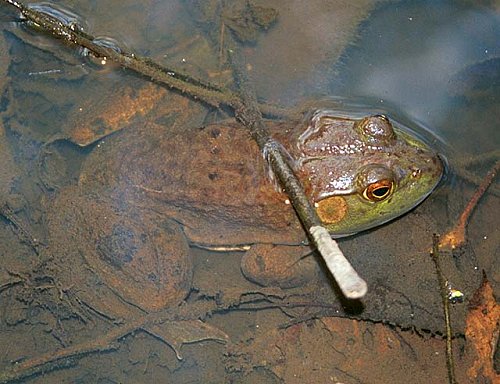What's New ( Old, Actually ) (1/4)
November 2020
Final Entry:
Converted the whole site to WordPress, no more need for this page, now the site has a Blog.
August 2018
Some more details on Round Valley.
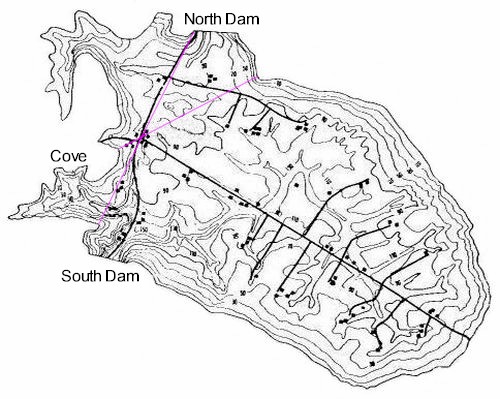
May 2018
Added a Guest Book. Not sure how that is going to work out. Spammers generally ruin these things, but this one is fairly hardened against them.
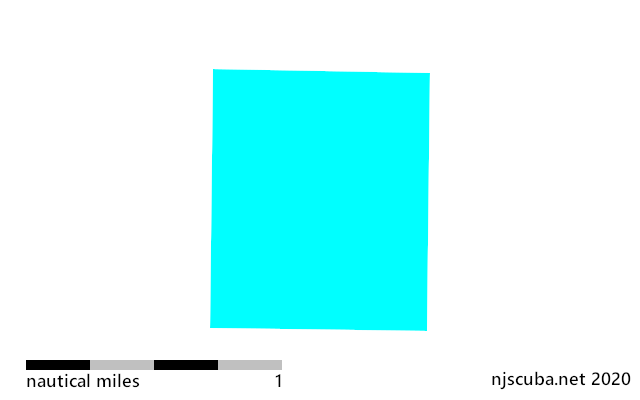
Added a clickable chart for the new Delaware Bay reef, although there is nothing on it yet. Also plotted the DelJerseyLand Offshore reef - over 60 miles out - insane!
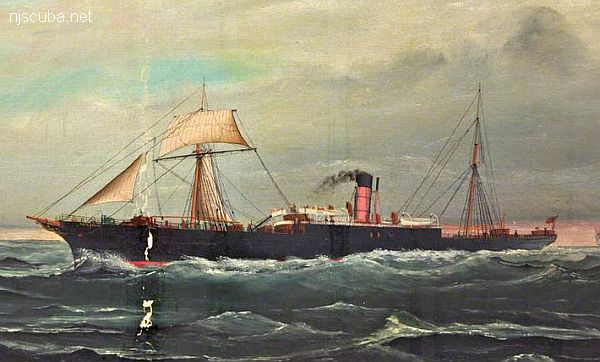
April 2018
Page Mode
Finally added a 'Mobile' mode for phones and tablets. The sidebar collapses to a small menu button at the upper left. Pretty cool, and didn't require re-coding the entire site, just a little cleverness. I made a new collapsing menu system for the desktop layout as well. You can switch manually between desktop and mobile modes with the new Page Mode button. The mobile mode is about as good as it will get on a phone, and either mode looks great on a larger display, you can take your pick.
Desktop/Mobile detection required upgrading the client detection, which revealed some interesting things. I have read that 50% of the traffic on the internet is 'bots,' but I found that hard to believe until I measured it myself. I fixed the page counters on the site to ignore such traffic; the hits reported on the pages are actual real human beings. I added some basic traffic statistics to the Top40 page.

New Book:
Undiminished Violence
by Thomas G Clark
About the great storm of January 1846, which sank the John Minturn and numerous other vessels.
Reset web counters, after a few years the numbers become meaningless. Fixed some glitches in dPlan that crept in when I ported it from Perl to PHP. The problems were all in the I/O routines, the decompression calculations were always sound. I/O is actually the largest part of the program.
June/July 2017
Added new Manasquan Inlet Artificial Reef and some other reef updates. Finally found the 'secret' GPS numbers of the Tamaroa.
November 2016
Download some reading for the winter:
- 20,000 Leagues Under the Sea - Jules Verne
- Moby Dick - Herman Melville
- Two Years Before the Mast - Richard Henry Dana
October 2016
Added a Top 40 page listing the most popular subjects, according to my web counters.
Nautical Measurements & Navigation is now its own page, with LAT/LON to distance/bearing calculators.
The Ida K was actually SC-1282, and participated in Operation Overlord - the invasion of Normandy in June 1944. Whoever thought this pile of junk had that kind of history!

New policy on GPS numbers.
September 2016
Major overhaul of beneath-the-skin framework code.
The tugboats and "GA Venturo" pages now much more interesting. Also, How to Make a Reef.
Replaced phpBB with MyBB. Added search boxes to the end of all pages.
Updated Artificial Reef section. New sites and GPS numbers (!!!). All vessels are now listed by their real names, many with expanded histories.
Added a "Bookshelf" - all the references listed in the various sections of the website, gathered together in one place. Also cleaned up all the individual 'References' pages.
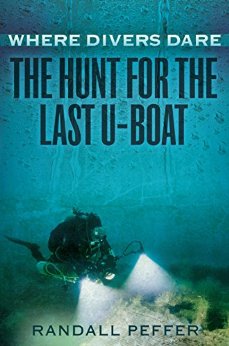
Collision At Sea - a page I've been thinking of doing for a long time.
![]() Bananas
Bananas
New book on the discovery of the U-550:
Where Divers Dare
The Hunt for the Last U-boat
by Randall Peffer
August 2016
Hidden History of Maritime New Jersey

by Steve Nagiewicz
Finished the story of the Redbirds.
Went through the 'Gear & Training' section and updated a lot of pages for new technology. This was long overdue.
July 2016
Increased font size as much as practical for mobile devices - a lot more work than it sounds - every page had to be checked for the resulting formatting glitches, and I'm sure I'll be finding the ones I missed for a long time to come. Increased some spacing to make links more 'finger-friendly. The site now works quite nicely on a tablet, and tolerably on a phone. With modern high-resolution displays, it also works better on a real computer.
I also made the sliding menu work better on small displays. It now follows you in a lazy way when you scroll manually, so you can see the off-screen part. You can summon it immediately by tapping in the water column. The menu tab is also a little smarter - fewer clicks to get around. Added a nag screen for phone users.
That's as far as I can go for mobile devices. More than that would require rebuilding the entire site just to ruin it for screens that are too small to display anything well anyway. I'm not going to do that.
Also added some more book excerpts from Gary Gentile's Popular Dive Guide Series. Here is the full list:
- Shipwrecks of New Jersey - North
- Shipwrecks of New Jersey - Central
- Shipwrecks of New Jersey - South
- Shipwrecks of New York
- Shipwrecks of Delaware & Maryland
- Shipwrecks of Connecticut & Rhode Island
These are terrific books that every diver or maritime enthusiast should have on their shelf.
Global counter topped 1 million since May 5, 2015, so I reset all the page counts.
June 2016
Addressed some problems with Google. A few new dive boats.
August 2015
- Added some architectural drawings of the R.P. Resor.
- Updated Shark River dive sites.
- Improved the 'weather scrapers' and added real-time conditions to many pages.
- Polished up my decompression program and allowed limited use for experimentation.
May 2015
- Updated fishing regulations and added all the New Jersey Marine Digests in PDF, back through 2000, on the Fishing Regs page.
- Added "Full Access Zones" to Sandy Hook and Axel Carlson reef charts.
- Updated fishing regulations and health advisories.
- Added a section on plant fertilizers to aquarium feeding.
Found the original files and re-rendered my swim-through of the Redbirds in "high-def" - well, the original 640x480 anyway, that's all the camera would shoot back then. It's still pretty cool stuff:
The soundtrack is just me huffing and puffing to push the camera rig in front of me with both hands, while going in and out of the cars with just my fins for control. Didn't crash into anything either, but I never used a tank of air so fast. I was back at the surface empty in about fifteen minutes.
April 2015
Checked browser compatibility & HTML/CSS - the site now works with all late versions of Firefox, Chrome, Safari, Opera, and Internet Exploder 11, on Mac, Windows, Linux, Android, and IOS platforms. Incapable browsers are now blocked.
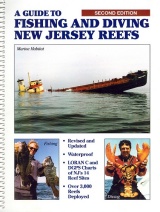
A Guide to Fishing & Diving New Jersey Reefs
NJ Division of Fish & Wildlife, 3rd edition PDF
Includes GPS numbers for all reef sites.
Download your copy here. This invaluable book has been out of print for years.
Major overhaul under the hood - much easier to maintain now. This site is huge, and was originally done in Microsoft FrontPage, an excellent product in its day, that Microsoft bought, ruined, and then killed, in what might have been a dry run for what they have done to all of their other products. Five years ago ( remember Vista? ) I switched to a Mac and never looked back. But the site's files - hundreds of them - were all full of now-useless FrontPage junk, and I despaired of what to do to take it forward. So it stagnated.
After looking at everything from WordPress to Drupal, I finally had a brainstorm and wrote my own framework in PHP. Now the site is easily managed with just a text editor - no database. And the transition - involving hundreds of files - could be automated to the point where it only took a few hours of determined hacking. All files are now PHP, with seamless redirects from the old HTML addresses. You might notice that almost nothing seems to have changed, but actually, everything has.
Structural updates:
- rebuilt entire site in PHP, JS, CSS and HTML5, all verified error-free
- invented a new form of CSS that is highly modular, flexible, and streamlined
- rebuilt image maps to be compatible with Gimp, which solved a major headache
- fixed five years' worth of broken links and removed a lot of broken stuff like Java apps
- trans-coded and/or upgraded all videos and got them working again, HTML5 standard
- added internal search functionality back to site; added google search box to sidebars
- added server-side hit counters
- new much sleeker frames implementation - use the sidebar, it works
New content:
- installed new Message Board system
- added a video I shot several years ago: Sylvanus.
- updated info and charts on Delaware reefs DelJerseyLand and #11
- added the McGinty reef & Robert J Walker
- updated and expanded the weather page
The solution I eventually came up with is one that turns modern web publishing on its head. A system like WordPress or Drupal stores small amounts of data in a SQL database and then invokes tens of thousands of lines of code to get it back out - just to say "Hello World", in the most complicated and buggy way possible. This site has a huge amount of data - moving it one piece at a time into a database was out of the question. Besides that, I am quite expert in WordPress, which is actually another reason why I wouldn't want to use it for this. Then I got my bright idea.
I kept the data in the text files where it already was, and have them invoke a very simple framework around themselves, to give the site its formatting and structure. This is something like the way Wikipedia works. All editing can be done with a text editor, I use TextWrangler, which has multi-file search-and-replace capabilities and a lot more. The data files are almost entirely bereft of all the usual HTML clutter - very easy to work on. The 'framework' is entirely separate from the data and likewise very easy to work on. The last piece of the puzzle is a decent FTP program - Filezilla does the job well enough. The more I fiddle with my "framework", the better and more flexible it becomes.
A little automation really goes a long way. All the repetitive elements of the site are now machine-generated. That includes almost all of the page layout and formatting. Automation also makes it easier to build a better link structure, so that related pages link to each other. I also came up with a novel way of using CSS that allows for very neat HTML coding.
The only thing I am putting my faith in is the PHP engine, which one hopes is debugged and hardened enough by now that NJScuba.net won't someday turn into a Russian porn site when I'm not looking. Even if it does get hacked, it is easily restored from my safe backup files. And the PHP engine is being very lightly used: without dozens of database queries for every page, the speed impact is negligible.
September 2009
New Book:
SCUBA Diving the Wrecks and Shores of Long Island, NY
by David Rosenthal
To order this book, visit The Wharves Project website at "https://thewharvesproject.org

